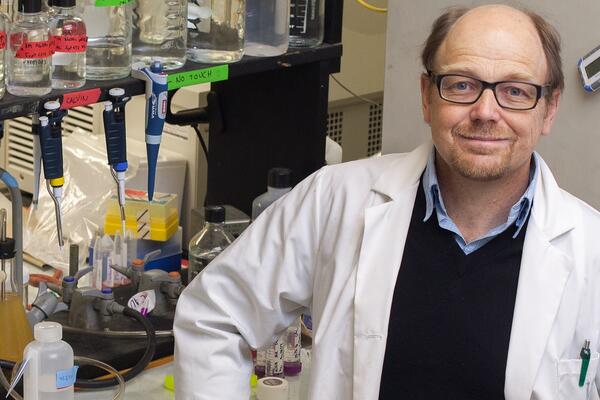
Waterloo chemists develop a faster form of drug testing
It will now be easier, faster and cheaper to catch athletes who take performance-enhancing drugs.

It will now be easier, faster and cheaper to catch athletes who take performance-enhancing drugs.
By Victoria Van Cappellen Faculty of ScienceIt will now be easier, faster and cheaper to catch athletes who take performance-enhancing drugs.
A new way of testing blood and urine developed by University of Waterloo researchers cuts down the time required to analyze samples from 30 minutes to 55 seconds. They're working to reduce it even further to 10 seconds per sample by using a fully automated workflow.
"That's fast enough to screen every Olympic athlete every day," said Dr. Germán Augusto Gómez-Ríos, a postdoctoral fellow with Waterloo's Pawliszyn Research Group.
When it comes to large-scale drug screening, the cost is also a factor. The group is working with industry to reduce the cost from an average of between $20 to $100 to just a few dollars per sample.
This more efficient process is made possible through the development of a rapid on-site screening technology called coated blade-spray mass spectrometry that can detect more than 100 drugs using just one drop of blood or a few microlitres of urine on a coated sample strip at the parts per billion level. That's like detecting a sugar cube dissolved in an Olympic sized swimming pool.
"If you know you're being continuously watched, you're less likely to cheat in the first place," says Gómez-Ríos, who cites the psychological advantage of having the chemical analysis take place in front of the athlete on a regular basis.
The technology relies on a method Waterloo's Prof. Janusz Pawliszyn developed in the 1990s called solid-phase microextraction (SPME), which uses a solid coating on a sample probe to selectively extract chemical substances from blood, saliva, urine and even plasma. After a simple washing step, the probe can then be placed in front of the mass spectrometer for analysis.
Coupled with recent advances in analytical instrumentation, which also includes Direct Analysis in Real Time and Open-Port Probe mass spectrometry, Pawliszyn's SPME methods are poised to revolutionize drug testing everywhere from sports competitions and roadside checkpoints, to emergency triage and workplaces.
Gómez-Ríos further shared that as a drug screening technique, coated blade spray-MS is ideal. It reduces tedious sample preparation to a single step and, in the near future, it will be interfaced to a simplified mass spectrometer that has been shrunken to the size of a PC desktop and can be set up anywhere.
"The important thing here is to avoid false negatives," says Gómez-Ríos. "That would be a disaster."

Under such a screening regime athletes who test positive in any way, for a slight misstep or full-on cheating, would then be followed up with a full analysis by standard methods.
"The idea is not to do a full analysis with every sample, only the positive ones," says Dr. Nathaly Reyes-Garces, a postdoctoral fellow who helped develop the protocol."
"Coated Blade Spray has demonstrated tp provide reliable results for different compounds in the concentration range required by World Anti-Doping Agency (WADA). A sample that shows a positive result can then be subjected to full confirmatory analysis."
Details about coated-blade spray MS were published last month in the journal Bioanalysis.

Read more
Here are the people and events behind some of this year’s most compelling Waterloo stories

Read more
Discovery of a thick atmosphere on a lava world reshapes our understanding of rocky exoplanets

Dr. Brian Dixon, professor of biology at the University of Waterloo says there is a link between cold weather and getting sick. (University of Waterloo)
Read more
Waterloo researcher shares why we get sick when the mercury dips
The University of Waterloo acknowledges that much of our work takes place on the traditional territory of the Neutral, Anishinaabeg, and Haudenosaunee peoples. Our main campus is situated on the Haldimand Tract, the land granted to the Six Nations that includes six miles on each side of the Grand River. Our active work toward reconciliation takes place across our campuses through research, learning, teaching, and community building, and is co-ordinated within the Office of Indigenous Relations.